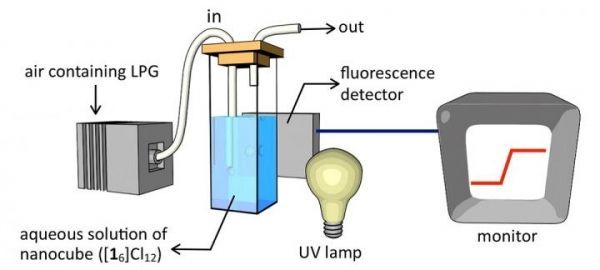A cube one-fortieth the size of a human red blood cell can glow when it detects flammable gas. The nanocube, designed by chemists at the University of Tokyo, is part of a research project to develop artificial systems that mimic the complex chain of events inside living cells.
The research team has worked on the nanocube project for over a decade. A key feature of the nanocube, just two nanometers on each side, is that it puts itself together, attempting to mimic the way proteins and DNA put themselves together in living cells.
“People automatically think about devices when we talk about sensors. But there are many examples of natural sensors in the body,” said Professor Shuichi Hiraoka, the lead researcher on the project from the University of Tokyo’s Department of Basic Science.
The basic chain of events in a cell to detect and report some signal has three steps: 1) A receptor detects the target molecule, 2) the receptor sends a signal to the reporter and 3) the reporter transmits the signal elsewhere in the cell.
Read more at: University of Tokyo
Researchers at the University of Tokyo have built a simple, cheap, highly sensitive and specific detector of liquefied petroleum gas (LPG). The gas is detected by a tiny box called a nanocube, about one-fortieth the size of a human red blood cell. The nanocube glows blue under fluorescent light when it is filled with the gas. Originally published in Communications Chemistry DOI: 10.1038/s42004-019-0212-6 (Photo Credit: Zhan et al., CC-BY)


